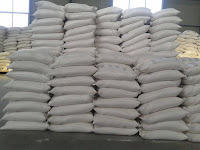Draws attention to the importance of water quality in the 1970s
 |
| Your dialysis team on the verge of the 1970s (Kings College Hospital 1969) |
Just as the outbreak of dialysis-associated hepatitis was dying down, a report (Alfrey et al) from Denver in 1972 described the first of many worldwide clusters of dialysis patients with an alarming degenerative neurological disease. The name ‘dialysis dementia’ was coined by George Dunea in Chicago. The disease started after more than 15 months of dialysis with disordered speech (dysarthria, dysphasia). Jerking movements followed, there were often fits, and then a progressive dementia that was often fatal within months to a year. By 1976 Denver was reporting that this was their leading cause of death. It was responsible for 8 out of 12 deaths after more than a year of dialysis.
This experience was repeated at various units around the world while many others were spared, and initially no clear pattern could be discerned. Many possible causes were considered, but aluminium was an early candidate. High blood levels of aluminium had been demonstrated in patients in Manchester in 1970, and it had been suspected of causing neurological syndromes. The source was assumed to be the aluminium hydroxide (Alucaps) that was taken in large quantities by dialysis patients as the standard phosphate binder of the day. However the epidemic affected only certain renal units, while just about all used aluminium hydroxide.
The proof came in 1976 from an observation at Eindhoven in the Netherlands, where dialysis dementia developed within three years of establishment of a new unit while patients at another unit across town were unaffected. Very high levels of aluminium were detected and it was noted that 32kg of aluminium had been eroded from the anode of a dialysis water heater in two years.
It was quickly discovered that high levels of aluminium in the water was a common feature of centres experiencing dialysis dementia. Aluminium levels in water vary naturally, but the high levels found were most commonly associated not with dialysis apparatus, but with Aluminium added to the water supply to ‘flocculate’ it (bring small particles out of the water to make it clear). In hard water areas, the methods used to remove calcium from water (ion exchange or reverse osmosis) also removed most aluminium. However in many soft water areas dialysate was often still made with tap water, just as it was when dialysis was new. Each time the patients were dialysed, more aluminium passed into their body, with no escape route (it would normally be excreted by the kidneys).
Other features of aluminium toxicity were a microcytic anaemia unresponsive to iron therapy, and a fracturing, vitamin D-resistant osteomalacia. In Edinburgh in 1980, 12 patients with high blood aluminium levels had microcytic anaemia, 7 developed fracturing osteomalacia, and one fatal encephalopathy.
Aluminium sulphate for water purification
With this realisation, affected units improved their water purification and it was realised that comprehensive quality standards were needed. It was found that dialysis against low-aluminium dialysate slowly improved less severely affected patients. From Manchester Peter Ackrill and colleagues described in 1980 that desferrioxamine infusions, previously used for iron overload, could speed removal of aluminium too.
Numerous other examples of aluminium toxicity have been recorded since, due not only to impurity of dialysate, but also of intravenous or peritoneal dialysis fluids. Close monitoring of blood aluminium levels since these episodes has shown that examples of serious aluminium toxicity from oral aluminium hydroxide intake must be very rare.
However aluminium turns out to be only one of the hazards of dialysis water, and dialysis dementia is just one of a number of diseases unique to dialysis patients.
Further info
Cameron JS 2002. A history of the treatment of renal failure by dialysis. Oxford University Press, Oxford
Alfrey AC et al. 1976. Dialysis encephalopathy syndrome. Possible aluminum intoxication. N Engl J Med 294: 184-8
Flendrig JA et al. 1976. Aluminium and dialysis dementia. Lancet Jun 5: 1235.

